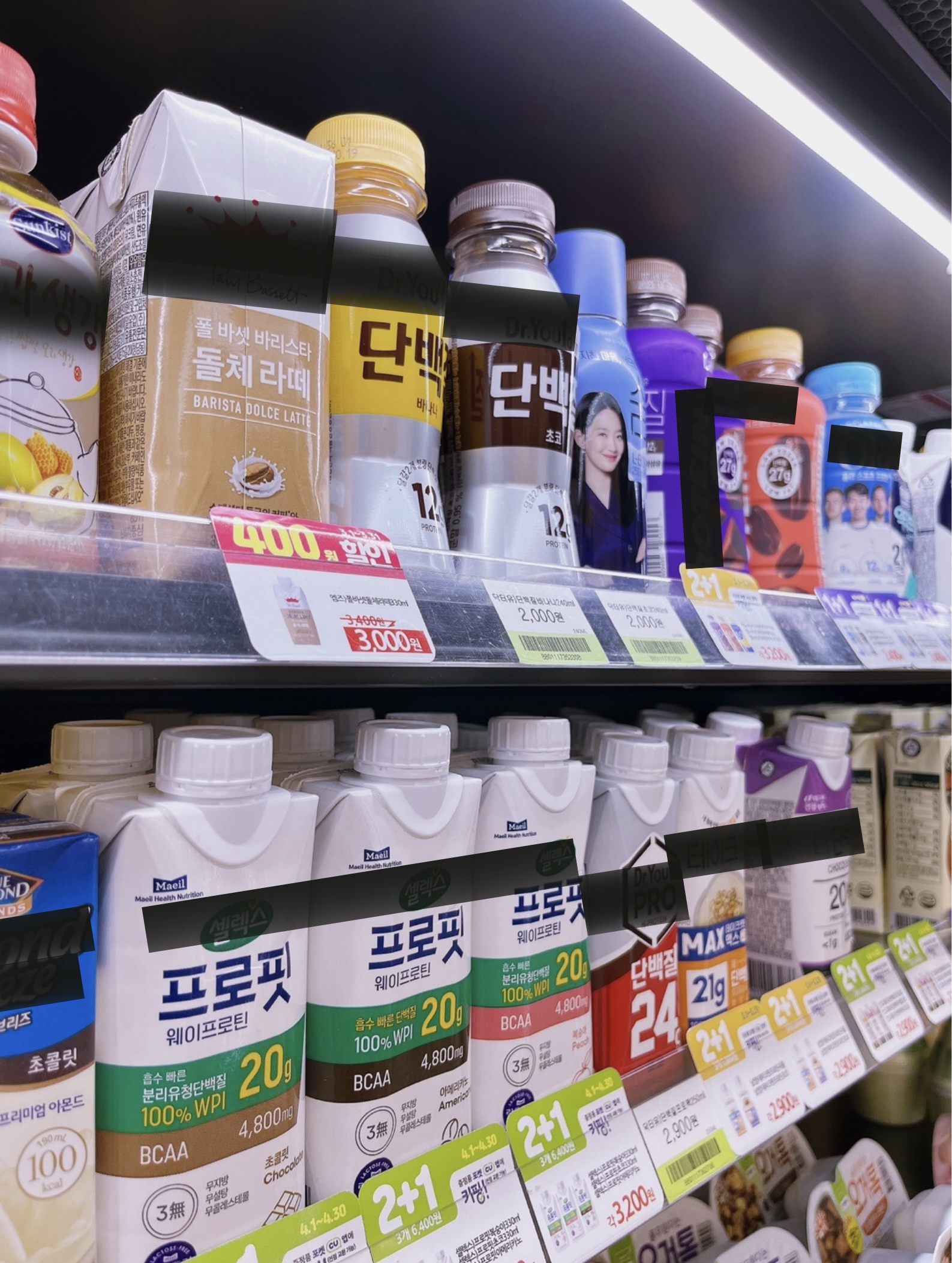According to popular belief, food that doesn’t taste good is good for your health, and food that tastes good isn’t. This resulted in people eating unappetizing food for their health benefits. However, these days, companies are jumping on the well-being bandwagon offering up healthier versions of their products to entice consumers interested in prioritizing healthier options without giving up their habits of bad food. For example, zero-calorie, zero-sugar beverages, and zero or low-alcohol content liquor is a popular trend. Soda companies released zero-calorie sodas while liquor companies released non-alcoholic beer and sugar-free soju. Beverages that offer added nutrients are also becoming popular these days. This trend has been boosted by the number of people who have taken up exercise to improve their health.
 |
| ▲ The Nutritional Ingredients Tables of Zero-Calorie Beverages (Photo from The Dankook Herald) |
People are drinking more than just water every day, leading to an increase in daily caloric intake. In order to reduce the number of calories they intake in a day, consumers are seeking out products that utilize sugar substitutes. A sugar substitute for a beverage helps the product maintain its taste with fewer calories and consumers are lining up to make the switch. Beverage companies responded by offering up several options for consumers. Liquor companies also created non-alcoholic beer and zero-sugar Soju for these new health-conscious consumers. Offering up nutrients rich beverages has also garnered as much attention as reduced calories have done. Many people are interested in getting in shape these days. Taking pictures after a workout is a popular activity. Consuming protein-rich drinks is a side effect of this health kick trend. This type of nutritional beverage contains protein, vitamins, and minerals such as iron and magnesium, and more. Thanks to these new product options, maintaining good health has never been easier.
It is not only the sugar count of drinks that is decreasing. The percentage of alcohol in some beverages is also changing. Soju is famous for its bitter taste but has been getting lighter recently. Moreover, manufacturers have launched a soju version with 14.9 percent alcohol volume, a significant drop from its usual 35 percent rate. This change in alcohol volume is related to a change in our drinking culture. If the previous drinking culture was "drink to get drunk," now it has evolved to “light drinking." In addition, liquor producers are now making versions of their products that taste better to attract more consumers. Lotte Chilsung, a well-known beverage company in Korea, produced lemon-flavored soju with a 2 percent alcohol volume to address the needs of consumers. Hite Jinro also provides various flavored beverages through collaboration with confectionery companies familiar to Koreans. Moreover, brewed liquor, a light drink made of fruit, has become more popular along with cocktails that can be mixed with other drinks. In 2021, OB Beer, a beer firm, released four kinds of cocktails such as "Cutwater" that can be consumed in cans. These products have 99kcal, are free of sugar and low in carbohydrates, and include two types of vodka combined with a seltzer-like soda which are both low-calorie and carb.
 |
| ▲ The Nutritional Beverages Contained Protein (Photo from The Dankook Herald) |
The Dankook Herald (DKH) surveyed Dankookians (Students of Dankook University) about their favorite drinks to understand the latest beverage trends. About 70 percent of the respondents said they prefer low-calorie drinks, so they tend to buy zero or low-calorie soda. Meanwhile, approximately 30 percent of those respondents who chose regular soda instead of low-calorie drinks said they chose it because of its flavor. According to the survey, respondents bought some drinks for specific purposes, such as protein or diet supplements, diet management, and health. The percentage of drinks purchased for diet support was the highest. Except for protein drinks, 66.7 percent of the respondents said they drink soy milk, water, vitamin drinks, vegetable juice, and detox juice for their health. Most Dankookians said they enjoy drinking, but none of them answered that they drink higher than 20 or 30 percent alcohol drinks, including original soju and distilled liquor. 31.3 percent of students said they frequently drink wine and beer and 56.3 percent of students said they often drink alcohol in the range of 14 to 18 percent alcohol by volume. When asked about their favorite alcohol, students preferred sweet soju, beer with added fruit, or wine. Based on these points, most Dankookians favor relatively low-dose alcohol, which coincides with current trends in alcohol consumption.
With the growing interest in health and the movement to find mild flavors, people are looking for low-calorie drinks, protein-supplemental drinks, and low-alcohol liquor. With this preference, the new products released recently have helped us in our efforts to consume more delicious and healthier beverages. The new trend in drink production, both alcoholic and non-alcoholic products, are being driven by consumer demand. Why don't you check out this latest health trend and give these new options a try? It might be the healthiest decision you ever make.
정영훈, 홍채연, 이은희 dankookherald@gmail.com






